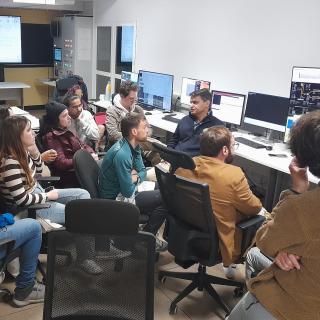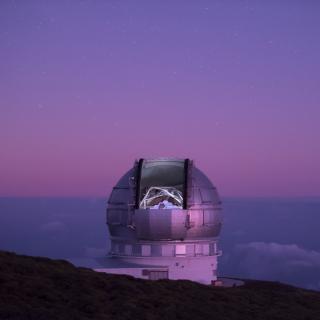It may interest you
-
 The EU-funded EDUCADO project (Exploring the Deep Universe by Computational Analysis of Data from Observations) at the Instituto de Astrofísica de Canarias (IAC) is organising a two-night astronomical observation school providing hands-on research training for early-stage researchers in astronomy and computer science. The program will convene 15 doctoral candidates from across Europe for an immersive, interdisciplinary learning experience. Attendees will engage in night time astronomical observations utilizing state-of-the-art telescopic instrumentation, guided data analysis workshops, andAdvertised on
The EU-funded EDUCADO project (Exploring the Deep Universe by Computational Analysis of Data from Observations) at the Instituto de Astrofísica de Canarias (IAC) is organising a two-night astronomical observation school providing hands-on research training for early-stage researchers in astronomy and computer science. The program will convene 15 doctoral candidates from across Europe for an immersive, interdisciplinary learning experience. Attendees will engage in night time astronomical observations utilizing state-of-the-art telescopic instrumentation, guided data analysis workshops, andAdvertised on -
 The members of the Comité Científico Internacional (CCI) of the Canary Islands Observatories met today on the island of La Palma. The ISC is the body established in the International Agreements that gave rise to the Canary Islands Observatories managed by the Instituto de Astrofísica de Canarias (IAC) and guarantees the effective participation of the User Institutions in decision-making regarding their use, maintenance and improvement. The meeting, held at the Hotel H10 Taburiente Playa, began with a minute's silence in memory of Professor Francisco Sánchez, founder of the IAC, whose legacyAdvertised on
The members of the Comité Científico Internacional (CCI) of the Canary Islands Observatories met today on the island of La Palma. The ISC is the body established in the International Agreements that gave rise to the Canary Islands Observatories managed by the Instituto de Astrofísica de Canarias (IAC) and guarantees the effective participation of the User Institutions in decision-making regarding their use, maintenance and improvement. The meeting, held at the Hotel H10 Taburiente Playa, began with a minute's silence in memory of Professor Francisco Sánchez, founder of the IAC, whose legacyAdvertised on -
 The Solar System research group at the Instituto de Astrofísica de Canarias (IAC) is participating in the international programme to keep a closet track of asteroid 2024 YR4. The aim is to determine its orbit with the highest possible precision before it stops being observable by ground based and satellite telescopes in April, and so improving our value of the probability that it will impact the Earth in 2032. In this context several telescopes of the Canary Observatories of the IAC are playing an outstanding role in this observing campaign: The Gran Telescopio Canarias (GTC) at the Roque deAdvertised on
The Solar System research group at the Instituto de Astrofísica de Canarias (IAC) is participating in the international programme to keep a closet track of asteroid 2024 YR4. The aim is to determine its orbit with the highest possible precision before it stops being observable by ground based and satellite telescopes in April, and so improving our value of the probability that it will impact the Earth in 2032. In this context several telescopes of the Canary Observatories of the IAC are playing an outstanding role in this observing campaign: The Gran Telescopio Canarias (GTC) at the Roque deAdvertised on
